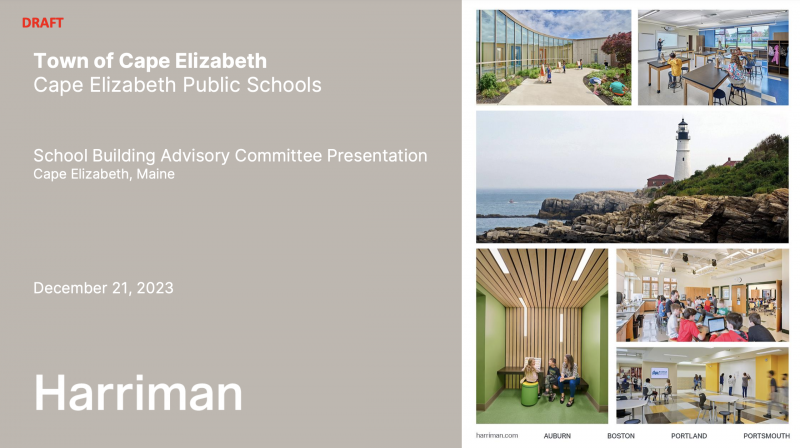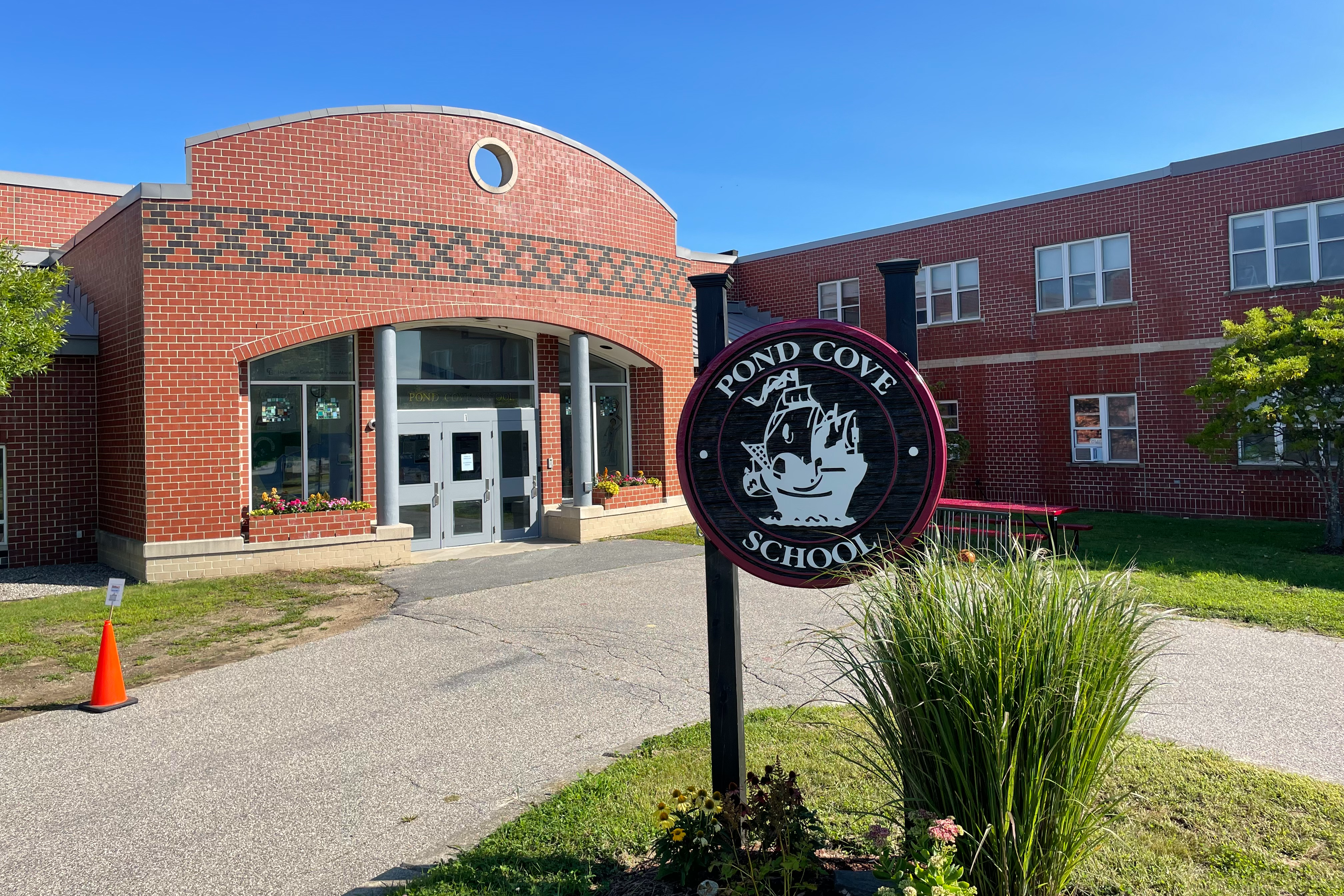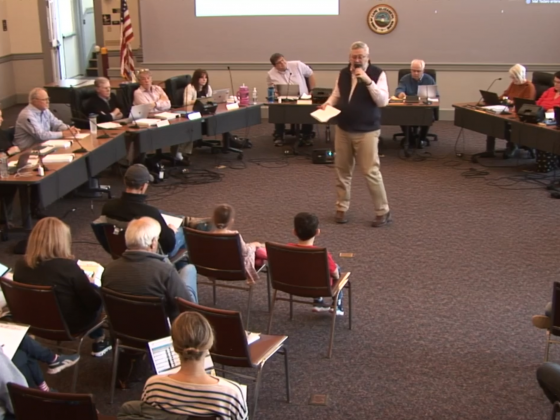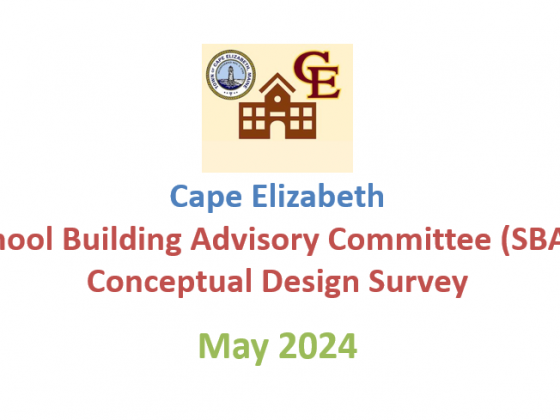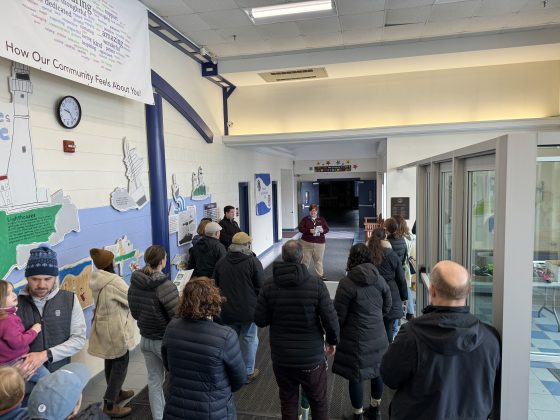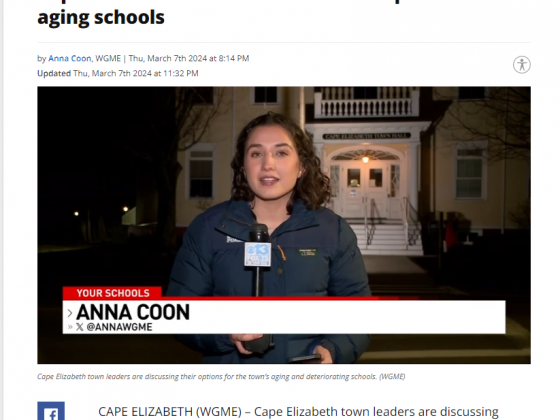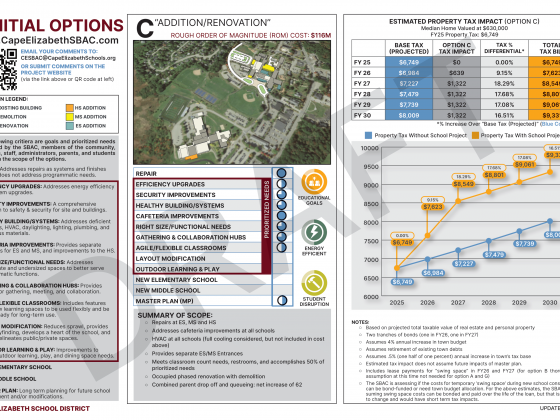In a comprehensive presentation by Harriman on December 21st, four critical areas were discussed regarding the future of Cape Elizabeth’s school facilities: Operational Recommendations, Integration of Survey Results into Design Work, and Space Analysis (Oversized, Undersized, and Spaces), and Energy Usage. Here’s a consolidated summary of the four sections:
1. Operational Recommendations: The presentation outlined key operational improvements aimed at enhancing the efficiency and effectiveness of the school’s facilities. Recommendations include upgrading outdated systems, such as heating, ventilation, and electrical systems, to not only improve performance but also ensure energy efficiency and cost savings. The report also highlighted the need for better maintenance strategies to prolong the lifespan of facilities and equipment. Emphasis was placed on adopting sustainable practices and technologies to create a healthier and more environmentally friendly learning environment.
2. Integration of Survey Results into Design Work: Harriman underscored the importance of community feedback in shaping the future of the schools. The presentation detailed how data from recent community surveys have been instrumental in understanding public opinion and preferences. These insights are directly influencing the design process, ensuring that the final architectural plans reflect the needs, concerns, and aspirations of the residents. This community-centric approach aims to foster a sense of ownership and support for the eventual construction or renovation projects.
3. Space Analysis – Oversized, Undersized, and Spaces: The report provided an in-depth analysis of the current spatial configuration within the schools, identifying areas that are either too large or too small for their intended use. For oversized spaces, the report suggested repurposing or reconfiguring them to better serve the school’s needs, while undersized areas were noted as requiring expansion or redesign. The overall goal is to optimize space utilization, making each area flexible and multifunctional to accommodate a variety of activities and adapt to changing educational needs over time.
4. Energy Usage Overview: The section on energy usage covered the current energy consumption and efficiency of the school buildings. The discussion included comparisons of energy use intensity (EUI) with other schools and standards, focusing on achieving lower EUIs for better energy performance.
This presentation by Harriman serves as a crucial step in the careful planning and design process, ensuring that any future updates to the Cape Elizabeth school facilities are well-informed, strategically sound, and aligned with the community’s vision for its educational environment.
